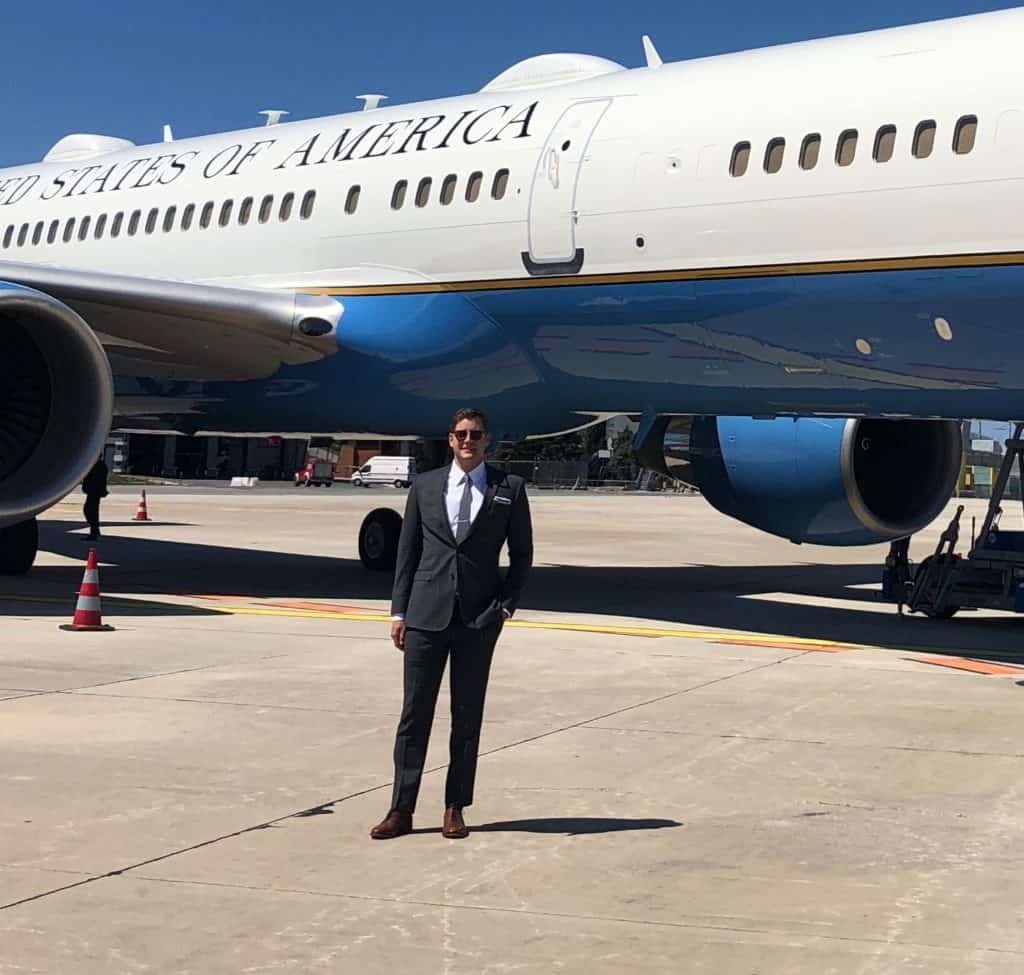Understanding Airline Pilot Schedules and Routings
Being an airline pilot is not just about flying high in the skies; it also involves navigating a complex web of schedules and routings. The life of an airline pilot is governed by meticulously planned schedules that dictate their time away from home, the duration of layovers, and the number of flights they undertake in a day.
These schedules are carefully crafted to ensure operational efficiency while adhering to strict regulations to prevent fatigue. One of the foremost challenges faced by pilots is managing fatigue.
The nature of their work often disrupts their sleep patterns, making it crucial for them to maximize rest whenever possible. When they finally arrive at their crash pad or hotel on a layover, they must prioritize getting quality sleep, despite odd hours and unfamiliar surroundings.
Many pilots invest in blackout curtains, white noise machines, or even wear earplugs to create a conducive sleep environment. To cope with the demands of their profession, airline pilots also pay close attention to diet and exercise.
Proper nutrition plays an essential role in maintaining energy levels and combating fatigue throughout long flights or erratic schedules. Pilots often pack healthy snacks for their time on board and make conscious choices when dining out during layovers.
Regular exercise becomes vital too – whether it’s hitting the hotel gym or going for walks during extended layovers – as physical activity helps boost stamina and reduce stress. Commuting policies play a significant role in shaping an airline pilot’s schedule as well as their work-life balance.
Some pilots choose to live near their base airport to minimize commuting time, while others opt for crash pads located near airports frequented by their airlines. This decision is influenced by factors like cost, convenience, and family commitments.
Commuting can be physically exhausting due to early morning flights or late-night arrivals at home after extended shifts. Overall, understanding airline pilot schedules and routings offers insight into the intricacies of this demanding profession.
It sheds light on the challenges pilots face, such as managing fatigue and adapting to odd hours, while emphasizing the importance of rest and self-care. Navigating through schedules, layovers, and commuting policies is instrumental in achieving a healthy work-life balance for these dedicated individuals who strive to connect with their loved ones and pursue hobbies amidst their demanding careers.
Just received a conditional job offer and not sure what comes next? Navigate the post-offer terrain with confidence by reading our thorough guide on What to Expect After Receiving a Conditional Job Offer.
Schedule Irregularities and Disruptions
Being an airline pilot comes with its fair share of schedule irregularities and disruptions.
From unexpected delays to last-minute diversions, pilots are constantly adapting to changes that can affect their work-life balance. These disruptions can be challenging, but experienced pilots have learned how to navigate them effectively.
One common disruption is flight delays. Whether it’s due to weather conditions, mechanical issues, or air traffic congestion, delays can throw a wrench in a pilot’s meticulously planned schedule.
Pilots must remain flexible and patient during these times, making sure to communicate with passengers and crew members about the situation. They rely on their experience and knowledge of route planning to make the best decisions for their flights.
Diversions are another unpredictable aspect of an airline pilot’s life. Sometimes a flight may need to land at an alternate airport due to unforeseen circumstances like bad weather or runway closures.
These diversions can add extra hours onto an already long day of flying. Pilots must quickly adjust their plans, inform the passengers about the situation, and coordinate with ground staff for logistics such as refueling and passenger accommodations.
Cancellations are perhaps the most frustrating disruption for both pilots and passengers alike. Whether it’s due to mechanical issues or scheduling conflicts, cancellations can cause major inconveniences for everyone involved.
Pilots often have contingency plans in place for such situations – they may arrange alternative flights or request standby options on other carriers – all while ensuring that they adhere to their duty time limitations. Schedule irregularities and disruptions are inevitable in the life of an airline pilot.
Delays, diversions, and cancellations can disrupt carefully crafted schedules and create challenges in maintaining work-life balance. However, with adaptability, effective communication skills, route planning expertise, and contingency plans at hand, experienced pilots find ways to navigate these disruptions while minimizing their impact on both themselves and their passengers.
Delays, Diversions, Cancellations
Delays, diversions, and cancellations are an inevitable part of an airline pilot’s life. Despite meticulous route planning and scheduling, unforeseen circumstances such as weather conditions, technical issues, or air traffic congestion can disrupt even the best-laid plans.
When it comes to delays, pilots need to remain flexible and adaptable. Airline pilot schedules are carefully orchestrated to allow for potential delays.
However, when a delay occurs, it can have a domino effect on subsequent flights. Pilots may find themselves rushing to catch up on lost time or having to rearrange their schedules entirely.
This can be mentally and physically taxing, especially if they were already facing fatigue challenges due to previous odd hours or sleep disruptions. Diversions happen when unexpected events occur during a flight that necessitates landing at an alternate airport instead of the intended destination.
This could be due to adverse weather conditions or technical problems with the aircraft. Pilots must quickly assess the situation and make decisions that prioritize safety above all else.
Cancellations are another disruption that pilots must contend with regularly. Whether it’s due to mechanical issues with the plane or operational factors within the airline itself, flights occasionally get canceled at the last minute.
This means rerouting passengers and finding alternative accommodations for crew members who were scheduled for overnight layovers. In these situations, pilots rely on their experience and training to handle schedule disruptions effectively.
They communicate with ground staff and fellow crew members while ensuring that passengers receive timely updates about their travel plans. Flexibility is key as pilots navigate through these challenges while maintaining professionalism.
It’s important for pilots to take care of themselves during these unpredictable situations by managing stress levels through proper diet and exercise routines despite irregular schedules. They also utilize layovers effectively by resting whenever possible, accessing crash pads provided by airlines, or engaging in activities that help them relax and unwind before heading back to duty.
All in all, delays, diversions, and cancellations are part of the pilot’s job, and managing these disruptions is crucial to maintaining a healthy work-life balance. By embracing flexibility and relying on their training, pilots can navigate through these challenges while ensuring passenger safety and finding moments to connect with family amidst the demanding nature of their profession.
Time Away From Home
One of the unique aspects of being an airline pilot is the significant amount of time spent away from home.
This time away can be both exciting and challenging, as pilots navigate through different time zones, experience circadian rhythm disruptions, and strive to maintain a healthy work-life balance. Understanding how to make the most of this time away is crucial for pilots.
Resting on layovers becomes essential during these periods away from home. Airlines typically provide pilots with hotel accommodations during layovers, ensuring they have a suitable place to rest between flights.
Maximizing sleep during these layovers is crucial for managing pilot fatigue and maintaining optimal performance in the cockpit. Pilots often travel with blackout curtains, white noise machines, and comfortable bedding to create a conducive sleep environment that mimics their home conditions.
Airline pilot schedules are carefully planned to allow for adequate rest periods between flights. However, disruptions can occur due to delays, diversions, or schedule changes caused by unforeseen circumstances such as weather conditions or mechanical issues.
These disruptions can significantly impact a pilot’s time away from home and challenge their ability to achieve a work-life balance. For pilots who commute long distances to their base airports, additional considerations come into play.
Commuter policies vary among airlines but usually provide options such as crash pads near the airport or reimbursement for accommodation expenses during commuting days. These arrangements aim to alleviate some of the stress associated with long commutes and help pilots maintain their well-being while staying close to work.
Managing time away from home also involves considering important life milestones and accommodating family priorities. Airline pilots often miss birthdays, anniversaries, and other special occasions due to their schedules.
Therefore, they must communicate effectively with their loved ones and plan ahead whenever possible so that important events are not overlooked or overshadowed by work commitments. Achieving a healthy work-life balance requires finding ways to connect with family despite being physically apart for extended periods.
Modern technology, such as video calls and messaging apps, has made it easier for pilots to stay in touch with their loved ones. Making time for quality conversations and fostering emotional connections during these interactions is crucial to maintaining strong relationships despite the physical distance.
Furthermore, airline pilots often pursue hobbies or engage in physical activities during their time away from home. Some may choose to explore the cities they visit by jogging or biking, while others may use this time to indulge in passions such as photography or writing.
Prioritizing these hobbies allows pilots to unwind, recharge, and find fulfillment outside of their work responsibilities. Time away from home is an integral part of an airline pilot’s life.
Successfully navigating this aspect involves effectively managing rest on layovers, adapting to disruptions in schedules, finding ways to accommodate important milestones and family priorities, and pursuing personal interests during downtime. By striking a balance between work commitments and personal well-being, pilots can make the most out of their time away from home and achieve a fulfilling work-life balance in the aviation industry.
Overnights, 4-Day Trips, Reserved/Ready Times
When it comes to the life of an airline pilot, the concept of “home” takes on a whole new meaning.
Being away from home for extended periods is an inherent part of the job. Overnights play a significant role in a pilot’s schedule, as they involve staying overnight in different cities or countries before flying back to their base.
These overnights can vary in duration, sometimes lasting for just a few hours, while others might provide some downtime to explore the local area. Another common scheduling arrangement for airline pilots is the 4-day trip.
This means that pilots are scheduled to work four consecutive days before getting a block of time off. During these trips, they usually fly multiple legs to different destinations and spend nights away from home.
The challenge with such trips lies in managing fatigue and ensuring enough rest between flights to maintain optimal performance. Some airlines also have reserved or ready times built into their schedules where pilots are on standby for possible assignments or last-minute changes.
Airline pilot commuting is another aspect that needs consideration when discussing schedules. Many pilots live far away from their base cities due to personal reasons or lower living costs.
This means they have to commute regularly between their homes and work locations, which can be costly and time-consuming. Some pilots opt for crashing pads – temporary accommodations near their base – where they stay during duty days but return home during off periods.
Others navigate through commuter policies set by airlines that allow them to travel at discounted rates. While this lifestyle may seem challenging and disruptive at times, many pilots find ways to adapt and make the most out of it.
Managing pilot fatigue becomes essential when coping with odd hours and irregular schedules. Pilots often prioritize getting enough sleep during layovers by carrying blackout curtains and white noise machines to create a more conducive sleeping environment.
Additionally, maintaining a healthy diet and exercise routine helps them stay energized and alert during flights. The life of an airline pilot is intricately intertwined with their schedules and trips.
Overnights in different cities, 4-day trips, and reserved/ready times all contribute to the unique rhythm of their work-life balance. While pilots face challenges such as fatigue and disruptions, they devise strategies to optimize rest both at home and during layovers.
Commuting considerations also play a part in their lifestyle choices, with crashing pads and commuter policies offering options for managing time away from home. Ultimately, it is through careful planning and adaptability that pilots navigate their schedules while still finding time for hobbies, family connections, and accommodating milestones.
Commuting Considerations as a Pilot
As an airline pilot, commuting is a significant aspect of our lives that requires careful consideration and planning. With irregular schedules and long hours spent away from home, finding the right balance between work and personal life can be challenging.
Commuting adds another layer of complexity to this equation, necessitating a strategic approach to ensure smooth transitions between work and home. One crucial factor that pilots need to navigate is the airline’s commuter policies.
Each airline has its own set of guidelines regarding commuting practices, which can vary widely. Some airlines offer designated crash pads or accommodations for pilots in their base cities, while others provide travel benefits for pilots who choose to live at a distance from their base.
Understanding these policies is vital for making informed decisions about where to reside and how commuting will fit into one’s lifestyle. Another consideration when it comes to commuting is the cost involved.
Pilots must take into account not only the financial implications of traveling between their home and base but also the potential impact on their overall quality of life. Balancing financial stability with personal well-being becomes a delicate dance in determining how much time can be spent with family versus how much money can be saved by living farther away from the base.
Additionally, managing fatigue while commuting remains a crucial challenge for pilots. The unpredictable nature of airline pilot schedules often results in circadian rhythm disruptions as we adjust to different time zones and irregular sleep patterns.
Finding effective strategies for maximizing sleep at home becomes paramount in combating fatigue and maintaining optimal performance both on-duty and off-duty. Commuting considerations are an integral part of an airline pilot’s life when striving for work-life balance.
Understanding commuter policies, managing costs, coping with odd hours, and addressing fatigue challenges are all essential aspects that pilots must navigate strategically. By carefully evaluating these factors and seeking out resources such as crashing pads or restful layovers when needed, pilots can create a harmonious equilibrium between their professional and personal lives, making the most of their time both in the air and on the ground.
Crashing Pads, Commuter Policies, Costs
For airline pilots, commuting is a unique aspect of their profession that requires careful planning and consideration. Many pilots choose to stay in “crashing pads,” which are affordable accommodation options close to their home base airports. These crashing pads provide a convenient place for pilots to rest between flights or during layovers, without the need for expensive hotel stays.
The cost of these crashing pads varies depending on the location and amenities offered, but they generally offer a cost-effective solution for pilots looking to minimize expenses while maximizing convenience. Airline pilot commuting policies differ among airlines, with some providing specific guidelines and support for pilots who live far away from their home base.
Some airlines offer commuting benefits such as travel allowances or discounted tickets for off-duty travel, making it easier for pilots to commute to work from distant locations. However, it’s important to note that these policies may come with certain restrictions or limitations.
Managing a healthy lifestyle while commuting can be challenging for airline pilots due to irregular schedules and odd hours. Maintaining a balanced diet becomes crucial when dealing with fatigue challenges caused by disrupted sleep patterns and circadian rhythm disruptions.
Proper nutrition can help mitigate fatigue and enhance overall well-being. Similarly, finding time for exercise becomes essential in counteracting the sedentary nature of flying and promoting physical fitness.
Overall, airline pilot commuting involves thoughtful consideration of crashing pads’ costs, understanding commuter policies set by each airline, managing nutrition and exercise routines effectively while on the move or during layovers, all in pursuit of achieving a work-life balance that accommodates personal milestones and allows quality time with loved ones. By avoiding disruptions as much as possible through careful planning and adhering to the guidelines provided by their respective airlines, pilots can navigate the challenges of commuting more smoothly while enjoying their chosen profession.
Adapting to Fatigue and Odd Hours
When it comes to being an airline pilot, one of the biggest challenges is adapting to the constant fatigue and odd hours that come with the job.
Pilots often have irregular schedules, where they might be flying during the day one week and then working overnight flights the next. This constant shift in sleep patterns can wreak havoc on their circadian rhythms, making it difficult to get a good night’s rest.
Resting on layovers becomes crucial for pilots trying to manage fatigue. While some layovers may offer ample time to relax and rejuvenate, others might be shorter with limited opportunities for rest.
Pilots have become experts at maximizing their sleep during these layovers, using blackout curtains, white noise machines, and comfortable bedding to create a conducive sleep environment even in unfamiliar hotel rooms. Of course, managing fatigue goes beyond resting on layovers; it requires a holistic approach.
Pilots pay close attention to their diet and nutrition as well. They understand that what they consume can greatly impact their energy levels and alertness during flights.
Many pilots opt for balanced meals that include lean proteins, whole grains, fruits, and vegetables while avoiding heavy or greasy foods that can cause drowsiness. To combat fatigue challenges faced by pilots due to odd hours, regular exercise also plays a vital role.
Incorporating physical activity into their routine helps boost energy levels and improves overall well-being. Many airlines provide fitness facilities for pilots during layovers so they can stay active while away from home.
In order to avoid disruptions caused by fatigue as much as possible while maintaining pilot work-life balance, airlines carefully consider route planning. They aim to assign consecutive flights within reasonable timeframes so that pilots have adequate rest periods between shifts.
Furthermore, commuter policies are put in place by airlines to help alleviate some of the stress associated with long commutes between home base and work locations. Adapting to fatigue and coping with odd hours is an ongoing journey for airline pilots.
It requires careful attention to managing sleep, maintaining a healthy lifestyle, and ensuring that personal needs are met despite the demanding nature of the job. By understanding the challenges and implementing strategies to overcome them, pilots can thrive in their careers while still finding time to connect with family and pursue hobbies when they are home.
Coping with Fatigue and Sleep Disruption
One of the biggest challenges that airline pilots face is coping with fatigue and sleep disruption. Flying long hours, dealing with odd schedules, and crossing time zones can wreak havoc on their sleep patterns and overall well-being.
Managing pilot fatigue is crucial for ensuring safety in the skies, so let’s take a closer look at how pilots cope with these challenges. Airline pilot route planning plays a significant role in managing fatigue.
Pilots need to be aware of their individual circadian rhythms and understand how time zone changes can affect their sleep patterns. By strategically scheduling flights and layovers, pilots can minimize disruptions to their body clocks.
Resting on layovers becomes essential to recharge their batteries, both physically and mentally. Commuter policies also come into play when it comes to coping with fatigue.
Many pilots choose to live in different cities than where they are based, resulting in additional travel time before reporting for duty. This adds another layer of complexity to their already demanding schedules.
The cost of airline commuting includes expenses such as crash pads – temporary housing options near the base city where pilots stay during periods of duty – which are necessary for minimizing travel-related exhaustion. To combat sleep disruption while at home, maximizing sleep becomes a priority for pilots.
They invest in blackout curtains to create a dark sleeping environment during daylight hours, ensuring they get quality rest despite irregular work schedules. White noise machines or earplugs help drown out any disturbances that may disrupt their precious sleep time.
Managing fatigue also involves taking care of one’s overall health through proper diet and exercise. Pilots understand the importance of maintaining good nutrition despite being constantly on the move.
They pay attention to consuming balanced meals and staying hydrated throughout flights. Regular exercise helps them stay physically fit, which contributes to better restorative sleep patterns.
Coping with fatigue and sleep disruption is an ongoing challenge for airline pilots due to the nature of their work schedules and frequent travel across time zones. By carefully planning routes, resting on layovers, adhering to commuter policies, and prioritizing sleep at home, pilots can better manage their fatigue levels.
Additionally, maintaining a healthy lifestyle through diet and exercise is crucial for sustaining their energy levels and overall well-being. Balancing the demands of their profession with personal commitments is vital to achieving a fulfilling work-life balance.
Circadian Rhythm Challenges
Managing pilot fatigue and coping with odd hours are some of the major challenges that airline pilots face on a daily basis. One of the primary factors contributing to this struggle is the disruption of their circadian rhythms.
The circadian rhythm, commonly referred to as our internal body clock, regulates various physiological processes, including sleep-wake cycles, hormone production, and body temperature. For airline pilots who frequently cross time zones and work irregular schedules, maintaining a healthy circadian rhythm can be an arduous task.
The constant change in time zones and irregular working hours can wreak havoc on an individual’s natural sleep patterns. Jet lag is a common phenomenon experienced by airline pilots due to these rapid shifts.
It often results in fatigue, sleep disturbances, difficulty concentrating, and even digestive issues. To combat these challenges, pilots must prioritize strategies that help stabilize their circadian rhythms.
One strategy is maximizing sleep at home before embarking on a flight journey. By ensuring sufficient rest prior to departure, pilots have a better chance of combating the inevitable fatigue that may set in during long-haul flights or extended duty periods.
Employing blackout curtains and using white noise machines can create a conducive environment for quality rest at home. Additionally, maintaining a consistent sleep schedule whenever possible helps regulate the body’s internal clock.
Another approach involves strategically planning layovers and resting on layovers effectively. Airlines often provide accommodations called “crashing pads” for pilots during overnight stays away from home.
These facilities are designed to offer quiet and comfortable environments conducive to restful sleep. Pilots must take advantage of these amenities by creating optimal sleeping conditions through the use of eye masks, earplugs or noise-canceling headphones, comfortable bedding options, and even familiar scents such as lavender oil that promote relaxation.
By understanding circadian rhythm disruptions caused by frequent travel and odd working hours, airline pilots can take proactive measures to mitigate their impact. Prioritizing sleep, both at home and during layovers, is crucial for combating fatigue challenges.
Moreover, creating a conducive environment for rest and establishing healthy sleep patterns are essential for maintaining optimal performance and achieving a healthy work-life balance. Through these strategies, pilots can better navigate the demanding nature of their schedules while still connecting with family, pursuing hobbies, and accommodating important milestones in their personal lives.
Strategies for Managing Energy Levels
Managing energy levels as an airline pilot is crucial for maintaining optimal performance and ensuring a healthy work-life balance. The nature of the job, with its irregular schedules, odd hours, and constant travel, can be physically and mentally demanding. Here are some effective strategies that pilots can employ to manage their energy levels:
First and foremost, prioritizing rest and sleep is essential. Pilots should make their sleep environment as conducive as possible by investing in blackout curtains, using white noise machines to block out distractions, and ensuring they have a comfortable mattress and bedding.
Maximizing sleep at home becomes even more crucial when considering the fatigue challenges pilots face due to irregular schedules and early morning or overnight flights. Diet and nutrition also play a significant role in managing energy levels.
Proper nutrition can help combat fatigue by providing essential nutrients that support cognitive function and sustained energy throughout the day. Pilots should aim for balanced meals consisting of lean proteins, whole grains, fruits, vegetables, and healthy fats.
It’s important to stay hydrated by drinking plenty of water during flights to counteract the dehydrating effects of cabin air. Additionally, regular exercise is vital for pilots to maintain physical fitness and boost energy levels.
Engaging in activities such as jogging or cycling during layovers can help combat the sedentary nature of flying while increasing endorphin production for improved mood and alertness. Exercise promotes better sleep quality too.
By incorporating these strategies into their daily routines, airline pilots can effectively manage their energy levels even amidst schedule disruptions or circadian rhythm disruptions caused by long-haul flights or crossing multiple time zones. In doing so, they can perform at their best while also finding time for personal hobbies or connecting with family when away from home.
Diet, Exercise, Rest on Layovers
When it comes to the life of an airline pilot, layovers can be both a blessing and a challenge. They offer a much-needed break from the demanding schedule and give pilots an opportunity to rest, refuel, and recharge. One crucial aspect during layovers is maintaining a healthy diet.
Pilots need to prioritize proper nutrition to ensure they have the energy and focus required for their demanding profession. Managing diet on layovers can be quite a task, especially with limited options available at hotels or in unfamiliar cities.
Many pilots opt for bringing their own snacks or meals to guarantee access to nutritious food. Packing items like protein bars, dried fruits, nuts, and even pre-made meals allows them to maintain control over their dietary intake.
Exercise is another crucial component of an airline pilot’s lifestyle, especially during layovers when they have some downtime. Staying active helps combat the sedentary nature of being in the cockpit for extended periods.
Pilots often make use of hotel gyms or bring portable exercise equipment like resistance bands or jump ropes with them on their trips. Engaging in activities such as running, cycling, or practicing yoga not only contributes to physical fitness but also aids in reducing stress levels.
Resting on layovers is paramount for pilots who need sufficient sleep to combat fatigue challenges they face due to odd hours and circadian rhythm disruptions. Many airlines provide accommodation facilities called “crashing pads” near airports specifically for pilots’ use during layovers.
These crash pads offer a quiet place where pilots can rest between flights without having to worry about commuting back and forth from hotels further away. Taking advantage of these amenities ensures that pilots can maximize their sleep time during layovers and return home feeling refreshed rather than exhausted.
Overall, maintaining a healthy lifestyle during layovers plays a crucial role in an airline pilot’s well-being and performance while on duty. By prioritizing nutritious food choices, incorporating regular exercise into their routine, and obtaining quality rest during layovers, pilots can better manage the challenges of their profession and achieve a healthier work-life balance.
Maximizing Sleep and Rest at Home
As an airline pilot, getting quality sleep and rest at home is crucial for maintaining optimal performance and managing the fatigue challenges that pilots face.
To maximize sleep at home, it’s essential to create a conducive sleep environment. Start by investing in blackout curtains to block out any intrusive light that may disrupt your sleep.
Soundproofing your bedroom can also help minimize disturbances from outside noise, ensuring a peaceful atmosphere conducive to rest. In addition to creating an ideal sleeping environment, incorporating regular exercise into your routine can significantly improve the quality of your sleep.
Exercise not only helps alleviate stress but also aids in regulating circadian rhythms disrupted by odd hours and schedule disruptions common in the life of an airline pilot. Engaging in physical activities such as jogging, swimming, or weightlifting can stimulate better sleep patterns, helping you feel more refreshed upon waking up.
To avoid disruptions during your designated resting time at home, it is important to communicate with family members or roommates about your schedule and the significance of prioritizing undisturbed rest. Establishing boundaries and explaining the importance of adequate rest will not only promote a harmonious living arrangement but also ensure you have the necessary downtime to recuperate from long flights and manage fatigue effectively.
By implementing these strategies for maximizing sleep and rest at home as an airline pilot, you can enhance your overall well-being and maintain a healthy work-life balance despite the challenges associated with this profession. Remember that taking care of yourself is essential not only for your own health but also for the safety and well-being of those who rely on you while you’re in command of an aircraft.
Blackout Curtains, White Noise, Comfort
When it comes to maintaining a good sleep routine as an airline pilot, creating an environment conducive to rest is crucial. One way to achieve this is by investing in blackout curtains for your bedroom.
These curtains are designed to block out external light sources, such as streetlights or sunlight, ensuring that you can create a dark and calming space even during daytime hours. By eliminating the distractions of brightness, blackout curtains help signal to your body that it is time for sleep, regardless of the irregular hours you may be keeping.
In addition to blackout curtains, incorporating white noise into your sleep routine can greatly enhance your ability to relax and fall asleep quickly. Whether you opt for a white noise machine or use a smartphone app, having a consistent sound in the background can drown out any disturbances or sudden noises that might otherwise disrupt your slumber.
This is particularly important when resting during layovers in unfamiliar hotels or crash pads where unexpected sounds can easily jolt you awake. Comfort should also be a priority when it comes to maximizing sleep at home or during layovers.
Investing in a high-quality mattress and pillows that provide proper support will go a long way in ensuring restful nights. Additionally, consider the temperature of the room and choose bedding materials that regulate body heat effectively.
Pillows with cooling gel inserts or breathable fabrics can prevent overheating and increase overall comfort levels. By implementing these strategies – using blackout curtains, incorporating white noise, and prioritizing comfort – airline pilots can optimize their sleep environment both at home and on the road.
Remember, quality rest is essential for managing fatigue challenges pilots face due to irregular schedules and odd hours of work. Creating an oasis of calmness allows you to recharge effectively so that you remain alert and focused while on duty without compromising your work-life balance or missing out on important milestones with loved ones.
Avoiding Disruptions
When it comes to avoiding disruptions in the life of an airline pilot, careful planning and adaptability are key. The nature of the job can be unpredictable, with delays, diversions, and cancellations becoming common occurrences. However, there are strategies that pilots can employ to minimize these disruptions and maintain a semblance of control in their schedules.
One important aspect is understanding the airline pilot route planning process. By familiarizing themselves with the intricacies of their assigned routes, pilots can anticipate potential challenges and plan accordingly.
This includes being aware of airports prone to congestion or weather-related issues that may lead to delays. Additionally, staying informed about any changes or updates in air traffic patterns allows pilots to adjust their flight plans proactively.
Another factor that greatly contributes to avoiding disruptions is effectively managing pilot fatigue. Fatigue challenges pilots face due to odd hours can impact performance and decision-making abilities.
Therefore, prioritizing rest and implementing healthy habits is crucial. This includes maintaining a balanced diet and regular exercise for airline pilots, as well as maximizing sleep at home by creating an optimal sleep environment with blackout curtains and white noise machines.
Furthermore, connecting with family plays a significant role in maintaining stability amidst a potentially disruptive schedule. Communication is key when it comes to accommodating milestones or important family events while working as an airline pilot.
By proactively discussing upcoming events and coordinating schedules with loved ones in advance, pilots can ensure they are present for these significant moments. Avoiding disruptions as an airline pilot requires strategic planning, and effective management of fatigue challenges through rest and self-care practices such as exercise for airline pilots.
Communicating openly with loved ones helps accommodate family priorities while pursuing a fulfilling career in aviation. By staying informed about route planning intricacies and being proactive in adapting schedules whenever possible, pilots can achieve a greater sense of work-life balance while minimizing disruptions along the way
Achieving a Healthy Work-Life Balance
Finding a work-life balance can be a daunting task for airline pilots, given the demanding nature of their profession. However, with careful planning and prioritization, it is possible to strike a harmonious equilibrium between work commitments and personal life.
One crucial aspect of achieving work-life balance is connecting with loved ones frequently. Since airline pilots spend a significant amount of time away from home, it is essential to maintain open lines of communication with family and friends.
Regular phone calls, video chats, and even surprise visits during layovers can help bridge the distance and foster strong relationships. When pilots are home, quality time becomes paramount.
Making the most out of the limited days off by engaging in activities that strengthen bonds is crucial. Whether it’s dedicating an entire day to spending time together as a family or planning date nights with your partner, prioritizing these moments ensures that precious time isn’t wasted.
Pursuing hobbies and passions outside of work can also contribute immensely to a healthy work-life balance. Engaging in activities that bring joy and fulfillment helps recharge one’s mental and emotional batteries.
Whether it’s taking up painting, playing an instrument, or participating in sports, having something to look forward to outside of flying helps maintain perspective and adds richness to life. In addition to maintaining strong relationships and pursuing hobbies, planning for life milestones is essential for achieving work-life balance.
By incorporating important events into airline pilot schedules well in advance—be it birthdays, anniversaries, or children’s school performances—pilots can ensure they are present for these important moments without compromising their professional responsibilities. Striking a healthy work-life balance as an airline pilot requires conscious effort in managing time effectively both on and off duty.
By staying connected with loved ones no matter the distance through frequent communication channels, prioritizing quality time during periods at home, indulging in hobbies that bring joy outside of aviation’s realm, and planning ahead for significant life events, pilots can find the equilibrium they seek. It is essential to remember that achieving work-life balance is an ongoing journey, requiring adaptability and a commitment to self-care amidst the demands of a challenging profession.
Connecting with Loved Ones Frequently
Maintaining strong connections with loved ones is an essential aspect of an airline pilot’s life. With the demanding and ever-changing nature of airline pilot schedules, finding ways to stay connected becomes crucial for nurturing relationships.
Despite the challenges posed by irregular schedules and time away from home, pilots employ various strategies to ensure frequent communication. One way pilots connect with their loved ones is through modern technology.
Thanks to smartphones, tablets, and video conferencing apps, distance no longer serves as a barrier to staying in touch. Pilots often utilize these tools during layovers or reserved/ready times to have regular video calls with their families.
Whether it’s reading bedtime stories to their kids or simply having a virtual dinner together, these moments help bridge the physical gap between pilots and their loved ones. Another approach for connecting with family is the utilization of crashing pads near their home base.
Crashing pads are accommodations shared by multiple pilots who live far from their base airport but need a place to rest during layovers or when commuting. This not only helps alleviate logistical challenges but also allows pilots to spend quality time with family members before or after flights.
By choosing crashing pads strategically, they can minimize commuting time and maximize precious moments spent at home. Managing pilot fatigue is essential in maintaining strong connections with loved ones too.
By prioritizing adequate rest and sleep on layovers, pilots ensure they are mentally present when engaging with family members back home. They carefully plan their diets, incorporating nutritious meals that provide sustained energy throughout the day and help regulate sleep patterns despite circadian rhythm disruptions caused by irregular work hours.
In essence, connecting frequently with loved ones requires careful consideration of various factors such as schedule disruptions, accommodation arrangements like crashing pads or commuting policies, managing fatigue challenges through proper diet and exercise on layovers or at home, avoiding disruptions whenever possible, coping effectively with odd hours and maintaining a healthy work-life balance overall. By employing these strategies alongside maximizing sleep at home and pursuing hobbies or activities that bring them joy outside of work, pilots can strengthen familial bonds and create lasting memories with their loved ones.
Quality Time When Home Together
When airline pilots finally step foot in their homes after days on the road, quality time with loved ones becomes paramount. It is a cherished opportunity to reconnect, relax, and create lasting memories.
Coping with odd hours and the fatigue challenges pilots face can make this time even more precious. Understanding how to maximize the limited moments together becomes crucial.
One key aspect of quality time when home together is ensuring that both partners are fully present and engaged. It’s important to set aside distractions such as work emails or social media and truly focus on each other.
Taking advantage of downtime by engaging in activities that both enjoy can help create a stronger bond. Whether it’s going for a hike, cooking a meal together, or simply snuggling up on the couch for an uninterrupted conversation, these moments foster connection.
Moreover, accommodating milestones and special occasions is essential for maintaining a healthy work-life balance. Pilots who prioritize their family’s major events demonstrate their commitment and love despite the challenges they face.
By diligently planning ahead, either by requesting time off or arranging schedules well in advance, pilots can ensure they do not miss out on birthdays, anniversaries, graduations, or other significant moments in their loved ones’ lives. Additionally, incorporating exercise into the limited time at home plays a vital role in maintaining overall well-being as an airline pilot.
Exercise not only helps combat fatigue but also enhances mood and reduces stress levels. Engaging in physical activities together as a family not only promotes fitness but also fosters quality bonding time.
From going for runs or bike rides to playing sports or signing up for workout classes together—these shared experiences not only prioritize health but also strengthen relationships. In essence, quality time when home together provides an opportunity for airline pilots to nurture relationships with loved ones amidst the challenges of their profession.
By being present and engaged during these moments while accommodating milestones and incorporating exercise into daily routines, pilots can strive towards achieving a fulfilling work-life balance. It is through these concerted efforts that the bonds between family members can be nurtured and strengthened, ensuring that the limited time spent together is truly cherished and meaningful.
Pursuing Hobbies and Passions
As an airline pilot, finding time for hobbies and passions can be a challenge due to the demanding nature of the job. However, it is crucial for maintaining a healthy work-life balance and ensuring personal fulfillment.
Despite the irregular schedules, commuting challenges, and fatigue that pilots face, there are ways to pursue hobbies and passions that bring joy and relaxation. One way pilots can engage in their hobbies is by making the most of their layovers.
During these periods of downtime in different cities, pilots can explore local attractions or engage in activities they enjoy. For instance, if you have a passion for photography, you could take your camera on layovers and capture stunning images of new places.
If you enjoy physical activity, research the best jogging routes or nearby gyms where you can exercise during your layover. Another option is to participate in online communities centered around your hobbies.
Many pilots find solace in virtual communities dedicated to various interests such as cooking, music production, or woodworking. Engaging with these online groups allows pilots to connect with like-minded individuals despite being geographically dispersed.
It provides an avenue for discussing shared interests or seeking advice from experienced hobbyists. Additionally, it’s crucial to plan ahead and schedule specific times for pursuing hobbies when at home.
Whether it’s playing a musical instrument or engaging in art projects, carve out dedicated blocks of time during periods when you know you will be off-duty. By prioritizing these activities and incorporating them into your routine, you ensure that they receive the attention they deserve while maintaining a sense of work-life balance.
,”airline pilot commuting” is indeed challenging when it comes to pursuing hobbies and passions due to the demanding nature of the job. However, “managing pilot fatigue” should not deter pilots from finding joy outside of their professional responsibilities.”Accommodating milestones” may require some creativity and careful planning but ultimately allows pilots to incorporate their hobbies into important life events.”Connecting with family” and engaging in activities that bring personal fulfillment are essential for a well-rounded and fulfilling life as an airline pilot.
Scheduling Activities In Advance
When you’re an airline pilot juggling a demanding schedule and constantly on the move, it becomes crucial to plan and schedule activities in advance to maintain some semblance of a balanced life. This means taking the time to carefully coordinate your commitments, both personal and professional, so that everything fits together smoothly. One of the first things to consider is maximizing sleep at home.
As an airline pilot, your erratic schedule can wreak havoc on your sleep patterns. Therefore, it’s essential to prioritize restful sleep when you have days off.
Investing in blackout curtains and white noise machines can help create a conducive environment for quality rest. Additionally, sticking to a consistent bedtime routine and avoiding stimulants before bed can assist in achieving a more restful sleep.
Commuter policies provided by airlines play a vital role in scheduling activities in advance. Some airlines offer crash pads or accommodations near airports for pilots who commute from other cities.
Understanding the availability and cost of these options can help you plan your trips better and ensure that you have suitable lodging during layovers or when commuting back home. Another aspect of scheduling activities is considering milestones and events in your personal life that are important to you.
Whether it’s birthdays, anniversaries, or special family occasions, coordinating your work schedule with these milestones allows you to be present for those cherished moments. Open communication with loved ones about your schedule is crucial as it enables them to participate actively in planning events around your availability.
Maintaining a healthy work-life balance as an airline pilot requires meticulous planning and forethought. By prioritizing rest at home, utilizing available commuter policies effectively, and accommodating significant milestones in advance planning, pilots can carve out time for hobbies and passions outside of work duties while ensuring they stay connected with their loved ones.
Incorporating exercise into this equation also helps manage stress levels while combating the physical challenges that come with odd hours and circadian rhythm disruptions caused by frequent travel across different time zones. Setting aside time for regular workouts and focusing on a balanced diet can contribute to overall well-being and resilience, both physically and mentally.
Overall, scheduling activities in advance as an airline pilot is not only about efficiently managing your professional commitments but also placing equal importance on personal life milestones, hobbies, restful sleep, and quality time with loved ones. By carefully planning and coordinating these aspects, pilots can maintain a healthy work-life balance while still excelling in their demanding profession.
Planning for Life Milestones
When it comes to planning for life milestones, airline pilots face unique challenges due to their demanding schedules and constant travel. Whether it’s a wedding, the birth of a child, or a special anniversary, these important moments require careful consideration and flexibility. Resting on layovers and maximizing sleep at home are vital strategies to ensure pilots can be present for these milestones.
One of the key aspects of planning for life milestones as an airline pilot is understanding the intricacies of airline pilot commuting. Commuting policies vary between airlines, and pilots often need to factor in the cost of commuting as well.
Some choose to stay in “crashing pads,” affordable accommodations near their home base, while others opt for more traditional housing arrangements. Balancing the cost and convenience of commuting is essential when planning significant events.
Furthermore, managing pilot fatigue is crucial to avoid disruptions during important life events. Fatigue challenges pilots face can disrupt their sleep patterns and overall well-being, making it essential for pilots to prioritize restful sleep during their time off.
Establishing healthy diet and exercise habits can also help mitigate fatigue by providing the body with proper nutrition and promoting physical well-being. Ultimately, achieving work-life balance as an airline pilot means finding ways to connect with family during significant moments despite circadian rhythm disruptions and irregular schedules.
Planning ahead becomes even more crucial when anticipating life milestones like anniversaries or birthdays. By incorporating hobbies into downtime periods at home or on layovers, pilots can also find solace in activities they love while maintaining a sense of normalcy amidst a challenging profession.
Planning for life milestones as an airline pilot requires adaptability, careful consideration of commuting policies and costs, effective management of fatigue challenges faced by pilots, prioritizing restful sleep at home or on layovers while maximizing time spent with loved ones during special occasions. It may not always be easy due to schedule disruptions and odd hours; however, with proper planning and dedication, airline pilots can strike a balance between their professional commitments and personal milestones.
Accommodating Family Priorities
When it comes to being an airline pilot, one of the biggest challenges is finding a way to accommodate family priorities. With irregular schedules, long hours away from home, and the constant juggling of work and personal life, it can be tough to strike a balance.
However, there are strategies that pilots can employ to ensure they make time for their loved ones. Firstly, communication is key.
Pilots must make a conscious effort to connect with their family members frequently, even when they’re on the road. With the advancement of technology, staying in touch has become easier than ever before.
Whether it’s through phone calls, video chats, or even sending little updates throughout the day via text messages or emails, these gestures help maintain strong connections. Another important aspect is making the most out of quality time when home together.
It’s crucial for pilots to prioritize spending quality time with their families during their days off or layovers at home. This means planning activities in advance and ensuring that those days are reserved solely for family bonding.
Whether it’s going on outings together, engaging in shared hobbies, or simply having a relaxed day at home catching up on missed moments – dedicating undivided attention creates priceless memories. But equally important is accommodating milestones and special events.
Airline pilots should make a concerted effort to plan their schedules around important family milestones such as birthdays, anniversaries, school events, or vacations whenever possible. Considering these family-centric occasions while scheduling flights and trips well in advance allows them not only to remain present during those precious moments but also demonstrate commitment towards maintaining a healthy work-life balance.
While being an airline pilot comes with its own set of challenges regarding family priorities; open lines of communication with loved ones are crucial for maintaining strong bonds when physically apart. Making the most out of quality time together during days off helps create lasting memories and strengthens relationships further still.
By thoughtfully accommodating important family milestones, pilots can show their loved ones that they are committed to striking a balance between work and family life. Remember, it’s about finding creative ways to connect and prioritize what truly matters – the people who make our lives meaningful.
Pilot Pathfinder Summary
The life of an airline pilot is undoubtedly a challenging one, filled with unique experiences and demands. From erratic schedules and constant disruptions to the exhaustion caused by circadian rhythm disruptions, pilots face numerous hurdles in their pursuit of work-life balance. However, there are ways to mitigate these challenges.
One crucial aspect of achieving a healthy work-life balance as an airline pilot is effective communication and connection with loved ones. Despite the time spent away from home, pilots can make it a priority to connect with their families frequently through phone calls, video chats, or even surprise visits whenever possible.

Quality time when they are home together becomes all the more precious and should be cherished. Pilots can also make an effort to pursue hobbies and passions outside of their demanding careers.
Whether it’s engaging in physical exercise or taking up creative endeavors during downtime on layovers, having activities that bring joy and fulfillment can greatly contribute to a well-rounded life. Planning for important life milestones such as birthdays or anniversaries is vital for maintaining a sense of normalcy amidst the unconventional schedule.
By accommodating these milestones in advance and including loved ones in the planning process, pilots can create special moments that strengthen relationships and provide much-needed stability. While there will always be challenges when it comes to managing pilot fatigue, odd hours, commuting logistics, and maintaining work-life balance, it is important to remember that these obstacles can be overcome with resilience and determination.
With proper support systems in place both at work and at home, airline pilots have the potential to lead fulfilling lives while navigating the skies above. So let us celebrate these remarkable individuals who soar through adversity with an unwavering passion for their profession – they truly embody the spirit of adventure while inspiring us all along the way.
Frequently Asked Questions
An airline pilot’s schedule can vary widely depending on the airline, type of flights (domestic or international), and seniority. Pilots can expect to work weekends, holidays, and overnight. Schedules often come in “blocks” of days on followed by days off.
Many pilots don’t live in the city where they are based. Commuting options include “jump seating” on another flight or purchasing a ticket. Planning is crucial, and some pilots choose to rent a “crash pad” near their base to make commuting easier.
Work-life balance can be challenging, especially for new pilots or those with less seniority. However, as pilots gain seniority, they often have more control over their schedules, making it easier to plan around family and personal commitments.
The job can have some health implications due to irregular sleep patterns, long hours, and the physical demands of flying. Pilots are required to undergo regular medical exams to ensure they are fit to fly.
Maintaining a healthy work-life balance involves careful planning, flexibility, and communication with family members. Many pilots find it beneficial to set boundaries and make time for exercise, social activities, and relaxation when they are off duty.
Related Articles
Passing Airline Pilot Training: Preparation, Study Tips, Simulator Sessions and Check Rides
Embarking on a career as an airline pilot is an adventure that requires meticulous planning and unswerving dedication. While the technical aspects are undoubtedly important, mastering the art of flight also necessitates developing soft skills like communication and teamwork. If you’re anxious about getting through the rigorous curriculum, fret not! Our guide on Passing Airline Pilot Training dives deep into essential preparation techniques, effective study tips, and what to expect during simulator sessions and check rides. Equip yourself with the knowledge you need to soar through your airline pilot training program.
Relocating for Your New Airline
The move to a new location for your airline job can be both exciting and nerve-wracking. Between finding a new home, settling in, and adjusting to a new work environment, there’s a lot to consider. However, we’ve got you covered with a comprehensive guide on Relocating for Your New Airline. This resource is designed to help you transition smoothly and adapt quickly to your new surroundings. Learn the best practices for a successful relocation and how to avoid common pitfalls.










